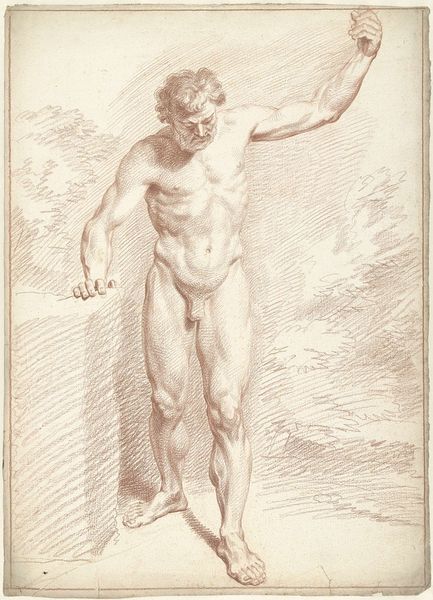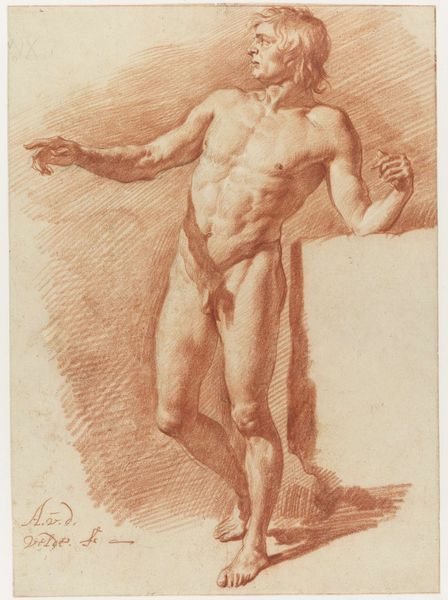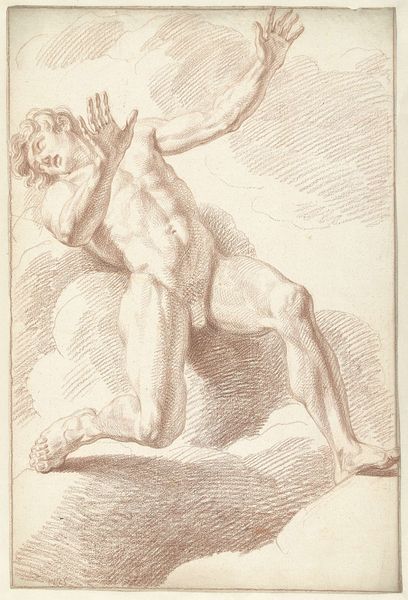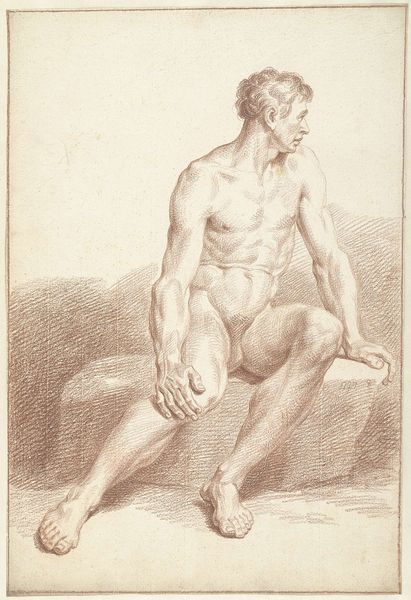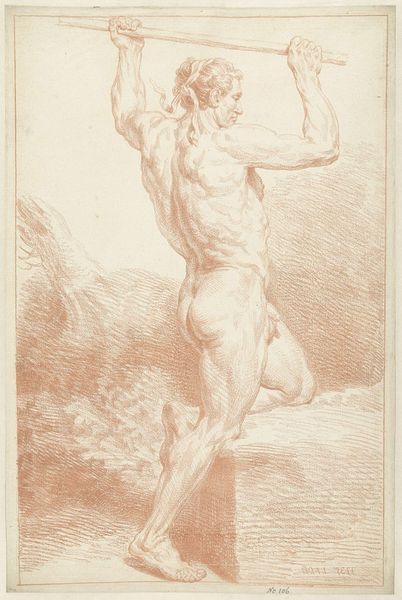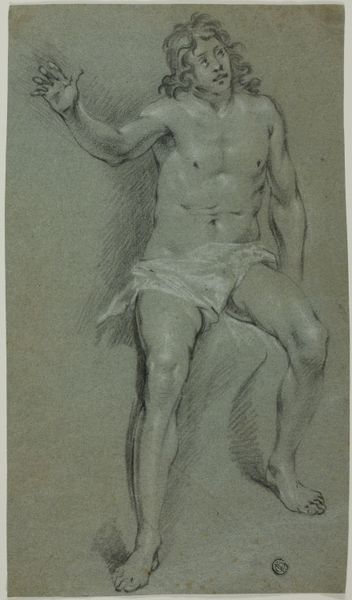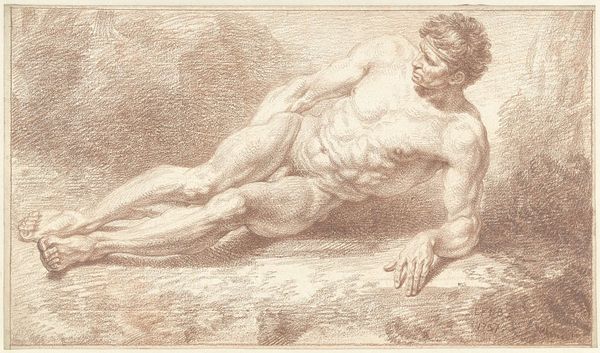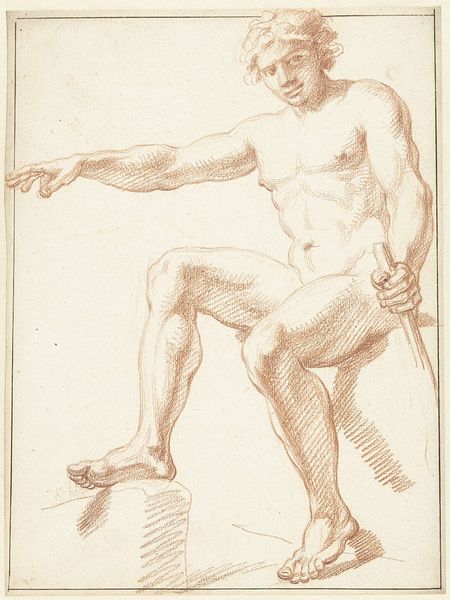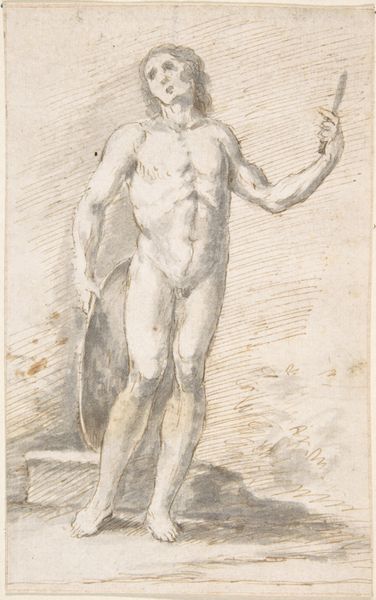
drawing, pencil
#
portrait
#
pencil drawn
#
drawing
#
baroque
#
pencil sketch
#
figuration
#
pencil drawing
#
pencil
#
portrait drawing
#
nude
Dimensions: height 470 mm, width 310 mm
Copyright: Rijks Museum: Open Domain
Editor: Here we have "Male Nude, Standing, Leaning on His Left Arm," a pencil drawing from 1726 by Louis Fabritius Dubourg, housed here at the Rijksmuseum. The initial impression I get is one of relaxed contemplation, despite the figure's classical musculature. How do you interpret this work through a formal lens? Curator: A valuable point, particularly when considering the visual vocabulary employed. Focus, if you will, on the interplay between line and shadow. Dubourg's use of hatching and cross-hatching meticulously defines the figure's contours and volume, yes? How does this, combined with the pose, contribute to the overall structure? Editor: Absolutely. The density of lines creates a strong sense of three-dimensionality, almost sculptural, even. The pose, with the figure leaning casually, adds a dynamic diagonal axis across the composition. It disrupts the verticality one might expect. What about the subtle details, like the rendering of the hair? Curator: The rendering of the hair, as well as the foreshortening of the limbs, displays a clear interest in classical form, yet it’s filtered through a Baroque sensibility. Notice the tension created between the idealized form and the realistic detail, a characteristic dialectic. Are these tensions not what give the drawing its particular energy? Editor: They certainly do. So, beyond the technique and structure, how can we discuss the meaning? Does the nude form itself contribute beyond the aesthetic? Curator: Precisely. Consider the classical artistic training, of which anatomical study formed a vital part. The pencil, then, becomes not just a tool but also a means of articulating the understanding of human proportion and, in this case, a highly academic approach. Are there other ways the visual elements shape how we should interpret the figure's internal life? Editor: The combination of precise lines and the relaxed pose certainly complicates a reading of emotional distress, implying instead tranquility. Thank you. Curator: A pleasure. Paying attention to the language of lines and the relationships between different elements allowed us a deep reading, beyond subject and symbolism.
Comments
No comments
Be the first to comment and join the conversation on the ultimate creative platform.
